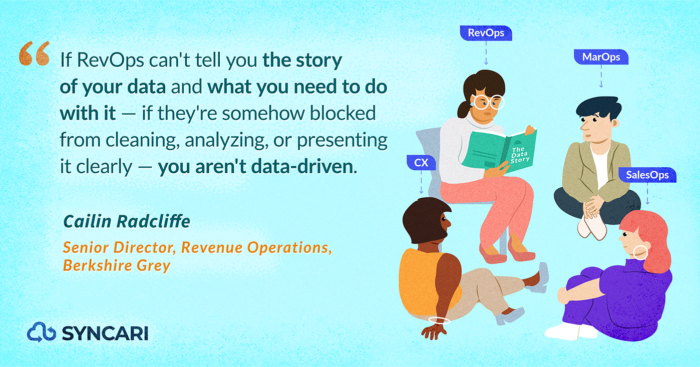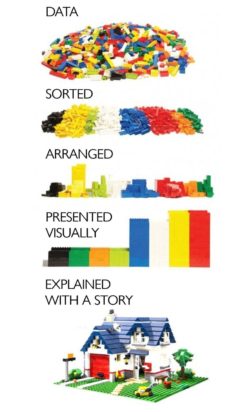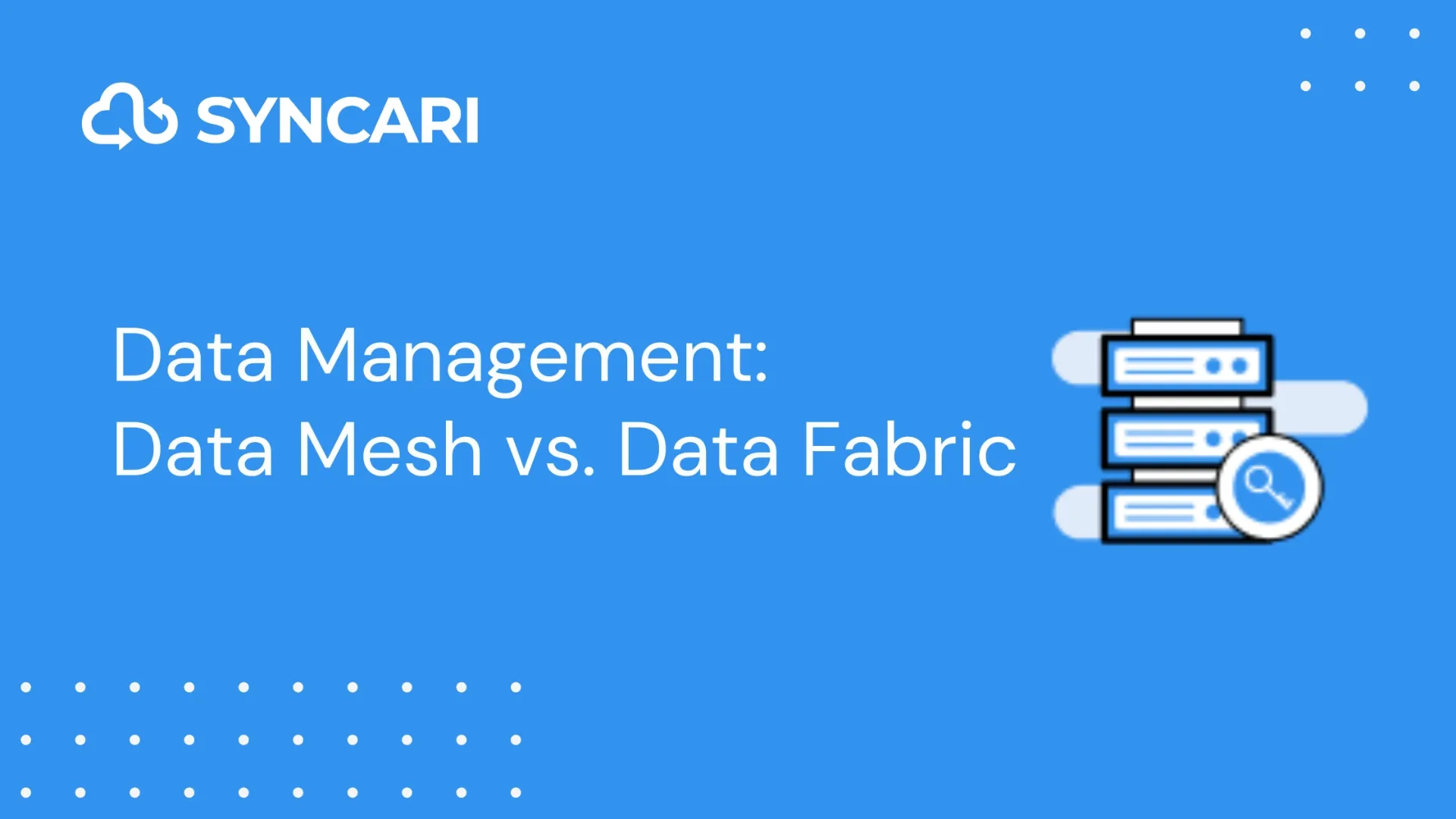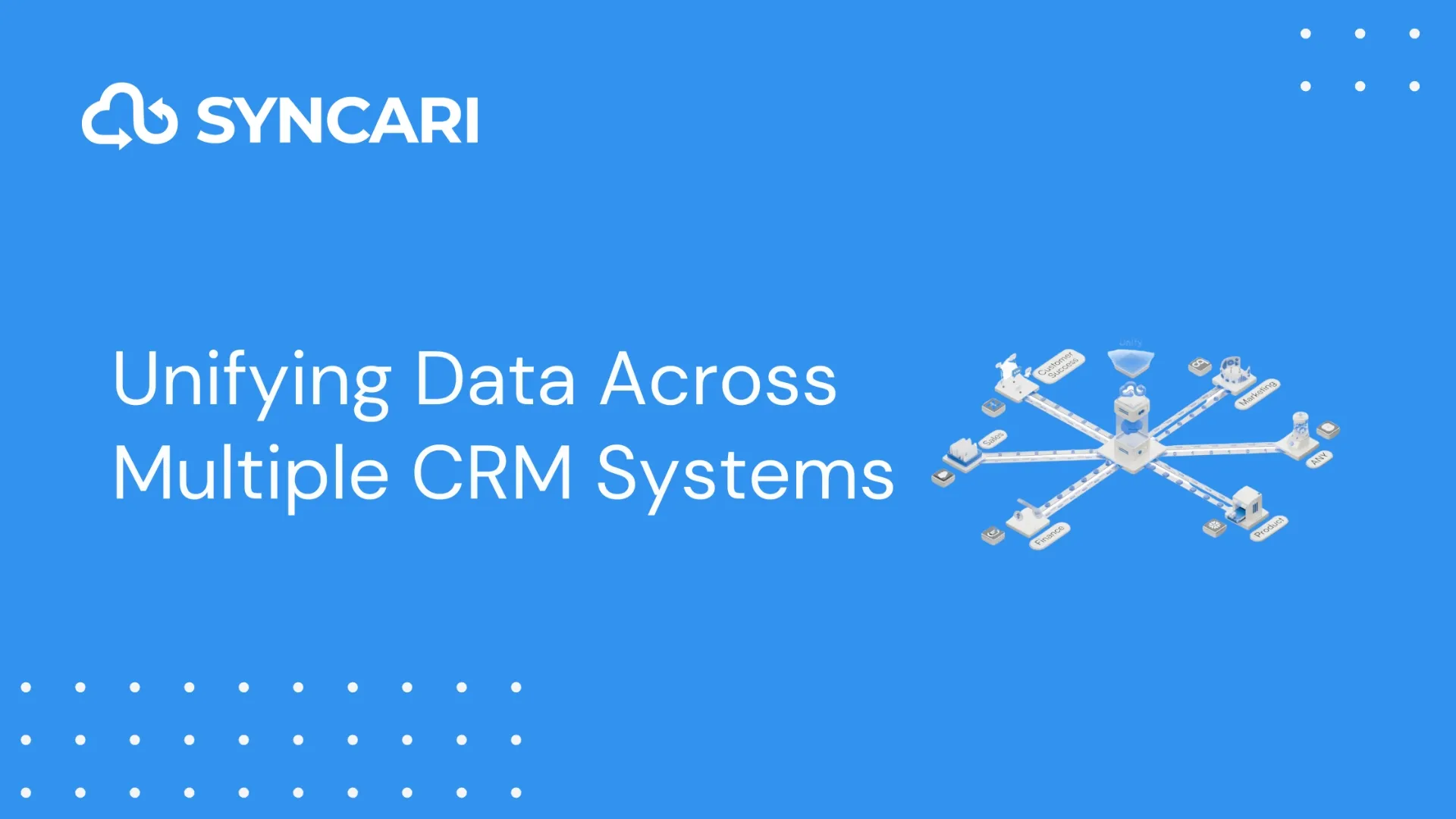To say Cailin Radcliffe knows a thing or two about RevOps is an understatement. She’s the Senior Director of Revenue Operations at Berkshire Grey, a leader in intelligent enterprise robotic solutions. Cailin sees the messiness of RevOps as an opportunity.
For instance, can we go further for GTM alignment? How do we tell the story of data? Who do you hire first when it’s time to build or expand your RevOps function? Her answers may surprise you — she thinks there’s a lot you can learn from LEGO and Netflix. (But really.)
Read on for our conversation on all this and more.
Nick Bonfiglio: You have a unique RevOps career journey. Can you tell me about it?
Cailin Radcliffe: You can come to operations from any background. I have a history degree. The diversity of thought in operations is what makes it special; you’re not just working with those who came from business or data backgrounds.
My degree specialized in warfare, so I was entrenched in strategy, research, and data. I was thinking about the connections between strategy and real battles. In the same way, the growth phase of RevOps requires a mind that sees battles to be won where others see defeat. Fixing RevOps messiness — where processes are nonexistent and systems are disconnected — is where I truly thrive.
Every Ops pro talks about aligning the GTM functions. How is your approach different?
The complex robotics and hardware component of our work is a challenge to the RevOps status quo. When RevOps folks talk about aligning their GTM teams, they are usually describing the operational connection they bring to sales, marketing, and CX. That’s the way it’s done right now. My team has chosen to establish a connection between us and other functions not usually touched by the hand of RevOps like product, engineering, and finance.
It’s a simple but powerful shift. The future of your company relies on your ability to work together seamlessly. Many software companies are not pushing their RevOps teams to align on all fronts. I think it’s a missed opportunity. If I went back to software tech, I’d push every RevOps team to expand into product and engineering. We can move much faster when we’re looking at the same data, drawing the same insights, and pursuing a deeper connection between functions.
What does a data-driven company look like to you?
There’s a fun visual going around that expresses exactly how I feel about this. At the top of the image, there’s a pile of mixed LEGO bricks and it’s titled “Data.” As you move down, the bricks are increasingly built up to represent how data is then sorted, arranged, and presented visually. All while the bricks are looking more and more organized. The final panel is a beautifully constructed LEGO house, complete with a LEGO lawnmower. Its label? ‘Explained with a story.’
Most companies stop at presenting data visually. They stack their LEGO bricks in a bar chart and place that chart in a PowerPoint and call those “insights.” If RevOps can’t tell you the story of your data and what you need to do with it — if they’re somehow blocked from cleaning, analyzing, or presenting it clearly — you aren’t data-driven.
What RevOps reading would you recommend?
I’m currently reading The Outsiders: Eight Unconventional CEOs and Their Radically Rational Blueprint for Success by William N. Thorndike. It initially piqued my interest because Warren Buffet recommended it.
The book touches on how to be accountable to capital allocation and financial efficiency, which is very applicable to RevOps’ leaders. It’s also about staying humble as you grow in your career. I’d recommend this book to any introverted leader. Thorndike spotlights how CEOs have succeeded while usurping traditional approaches to leadership. It’s a fantastic read.

How do you build or expand the RevOps function effectively?
Founders and leaders have been reaching out to me to discuss building their RevOps function. These leaders ask me, “Who do I hire first? Sales Ops, Marketing Ops, or CX Ops?” My answer surprises them: It’s none of the above.
There are two core competencies you need to build your RevOps team: the systems-process-tech side and a strategy-forecasting-people side. I’ve been fortunate to have a colleague who excels at the systems-process-tech side of RevOps. My strengths lean towards the strategy-forecasting-people side. Together, we make RevOps magic.
If you set out to hire Sales Ops, you’re going to look for people with Sales Ops backgrounds. That narrows your pool of candidates instantly. If instead, you look for candidates who are great with the process and the tech, your pool of candidates and the diversity of their backgrounds broadens. Every successful company needs a balance of those two skill sets — whether that’s six people or 20.
Is there a piece of software that’s helping you stay efficient?
I’m a huge fan of JIRA, which is popular with IT and engineering teams. I integrate it with Slack to create a RevOps Help channel. When requests come in, it automatically creates tickets and slots them into our workloads in a structured way. Realistically, there will always be too much work on a RevOps team’s plate. With JIRA, we avoid the constant individual pinging that interrupts our productivity.
When we meet together, we have the full picture of what everyone is working on and we can collaboratively prioritize and reprioritize until we’re making the best use of our time. If you’re looking for a way to visualize all of the behind-the-scenes work no one recognizes on a RevOps team, JIRA is a life-changing tool.
What’s the strangest way you’ve learned about leadership?
We’re all spending more time during this pandemic watching Netflix, right? I’ve been watching a medical drama called New Amsterdam. The medical director’s name is Max Goodwin. Every time one of his residents approaches him with an issue, his first response is to ask “how can I help?” Recently I’ve adopted this Netflix-inspired approach (laughs). I want to be approachable to those I work with — always leaning in and asking how I can support them. I encourage my team to do the same.
Sure, we’re all very busy. But as we build on data, structure, process, and tools, it’s important to remember we can’t do any of it without people. If our colleagues don’t see us as a team that empowers them to do their best work, we won’t be able to achieve our collective goals. That’s why I love the “how can I help?” approach.
Want to connect with Cailin? Follow her on LinkedIn.



